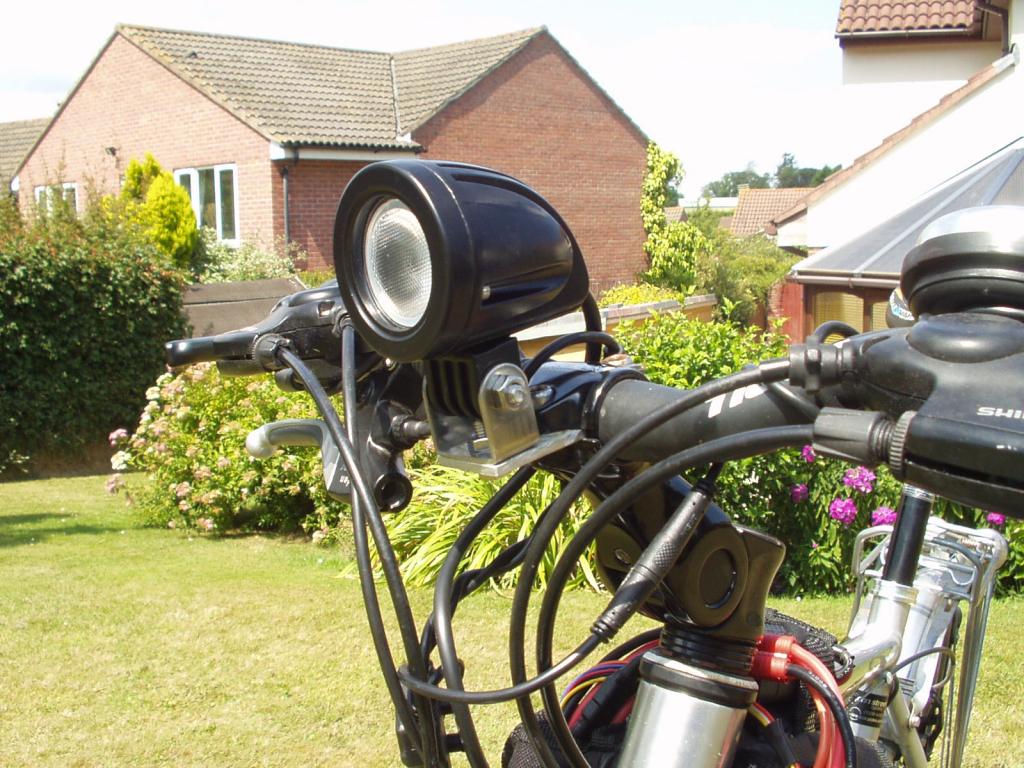The thin wires are not designed to handle too much current as high current causes a significant voltage drop across the wires.
I would not recommend placing more than ~0.5A load on these thin wires
(12W @ 24V, 18W @ 36V or 24W @48V), but even 0.5A can sometimes cause problems with the throttle if a separate ground wire is not used:
The Black and Blue wires are both commonly connected ground wires which provide the return path for the current in the lights and horn circuits, and it is the thin harness wire connected to these wires that may cause the throttle problem, therefore it is these are the wires that you would need to connect the additional ground wire to, but only if you encounter the previously described throttle problem.
The eight wires in the harness are very thin and will therefore have a higher resistance than a thicker wire.
At very low current levels there is very little voltage drop through these thin wires, but as the current increases (by turning on the additional lights) there will be a much greater voltage drop across several feet of thin harness wires.
Of the eight thin harness wires, just one of them is used as a return path (ground wire) for the battery LED gauge, the throttle Hall sensor, both brake switches and the cruise control button in addition to the lights and horn.
If the lights and horn used a separate wire as the return path, the current flowing through it (and the associated voltage drop) would not affect the operation of the throttle.
When I first experience the throttle problem (the motor started running when the lights were turned on) I spoke to GM about it and they said it was probably electromagnetic interference from the LED driver unit that was upsetting the controller. But after I looked into it a bit deeper the reason soon became apparent.
If you would like a more technical explanation, please read the following:
The additional load causes a greater voltage drop throughout the entire feed and return circuit consisting of two thin wires (battery + and battery -) that start at the sealed multi-junction block by the motor and runs right through the harness to the multi-connector on the front harness (over 5' on my harness). From the front multi-connector, the battery feed continues up to the light switch and then back again (that's another 2' each way) before heading off to the light connections (another foot). The ground wire from the light connection then completes the circuit back to the multi-connector (another foot).
So (excluding the thicker wires on the light unit itself) the current has to travel along at least 18' of thin gauge wire, and if the difference between the measured battery voltage and the measured voltage across the two light connections was 3V (48V at battery but only 45V at the headlamp) this would equate to a 0.167V drop across each foot of wire.

The throttle Hall sensor also shares the same ground connection in the front multi-connector, which due to the voltage drop along the 5' long ground wire has been increased to 0.84V instead of 0V.
So instead of the throttle signal being ~1V, the same ~1V output has actually been increased by 0.84V in relation to the battery ground, which the controller is directly connected to though the thick battery cables.
Therefore the controller effectively receives a 1.84V throttle signal voltage (~1V + 0.84V) which is equivalent to ~30% throttle.
Alan
P.S.
I have a 10 watt LED headlamp wired directly to the lighting wires on my Smart Pie 4 and did not experience a problem with that bike with the lights turned on, so yours might work OK too.


The switch and the thin wires could probably withstand 1~2A without becoming too hot, but I would not recommend it.
Alan